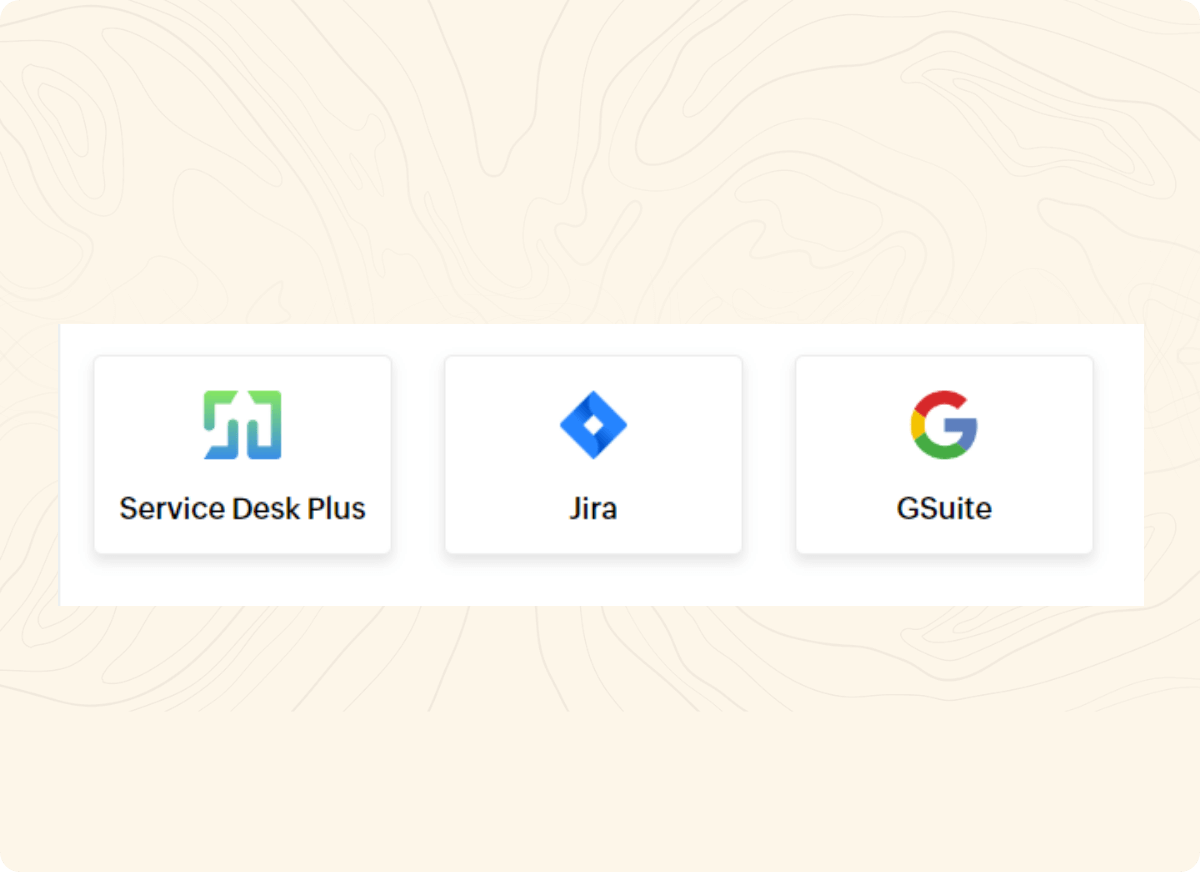Employ a unified management console for all your integrations.
Cybersecurity experts' poll revealed that 72% of organizations consider ease of integration as one of the top factors when they evaluate an IAM solution.*
Gartner predicts that by 2026, 50% of organizations using multiple SaaS applications will integrate applications and centralize management.*
Time spent by users and the IT help desk on password-related issues is reduced by 25% when SSO is enabled.†
Identity360 enables cross-platform integration with various directories and applications.
Identity360 helps you manage your directories and also leverage your preferred directory as an Identity Provider (IdP) for accessing your organization's applications. With Identity360 you can centrally manage user information and maintain consistent access privileges across all integrated systems, from a single console. Its secure SSO functionality eases user experience and fosters an aligned environment to access all your applications.
If your organization relies on Azure AD as its primary data store, integrating with Identity360 streamlines user account creation enterprise applications that are assigned to users, through SCIM-based provisioning. This integration also simplifies identity management with orchestration, enables comprehensive reporting, and activates SSO.
Learn moreIntegrating Salesforce with Identity360 enables your organization to leverage its built-in Universal Directory for authentication, while also benefiting from Salesforce's CRM features. The integration centralizes identity management, ensures secure SSO, and generates comprehensive user information reports.

Identity360 facilitates a cohesive and streamlined approach to user authentication by using the Universal Directory as the Identity Provider (IdP) for a wide range of integrated applications. Our identity life cycle management capabilities, like orchestration and smart templates, enable admins to provision and manage users, and control their access from a single console.
Increase the scope of your organization's scalability with the option of integrating with our roster of applications including Slack, Zendesk, Google Workspace, Jira, Zoho People, and more.

Here's how to unlock effortless user data and permissions management with integrations!

When a user is onboarded, their personal information and identification details are used to initiate their identity setup in the organization's primary directory. Identity360 then interfaces with the organization's other directory services to create a user account and synchronize their data.
Identity360 also provisions access to various applications based on the user's role. This also involves SSO and ensuring seamless access to relevant systems.
Identity360 helps achieve uniform identity management organization-wide by effectively integrating directories and applications.
Administrators can utilize a user-friendly, straightforward interface that is convenient and meets their IAM needs.
Enable centralization of information from your organization's existing directories.
Integrating applications aids in gaining one click secure access to all enterprise applications.
Grant and revoke access to users when they join or leave the organization across all the integrated platforms.
Maintain consistent user information and access privileges across all connected systems.
It's common for organizations to employ an array of applications for their workforce. Your organization might already have a repository containing user details and their access permissions. The presence of a unified control panel for centralized administration, integrated with your directory and apps, becomes crucial to guarantee harmonization and uniformity across all platforms. Identity360 is the ultimate solution to optimize operational efficiency and reinforce secure authentication measures.
Directory integration enables organizations to connect and synchronize user data between different directories or databases for centralizing user management and access control. This is crucial for maintaining consistent user information and access control across multiple connected systems.
Yes, integration aids in the implementation of SSO, as it enables seamless authentication and access management across various applications and services with a trustworthy source of user data.
Assess your organization’s needs and the directories that you currently use. Choose an appropriate integration solution like Identity360 that will provide you with built-in directory integrations that suit your organization to centralize management.
The major difference between directory integration and application integration is that directory integration includes tasks like user account creation, data synchronization, and overall directory management, while application integration primarily involves creating user accounts and providing access to enterprise applications assigned to users.
Source: *Expert Insights and †Gartner.